
Oktoberfest in Munich: Bavarian Hops and Alpine Tops
 7 Day Tour of Munich
7 Day Tour of Munich
Overview
Trip Map
Itinerary
Inclusions
Reviews







7 Days 6 Nights
Best Time: Apr-May, Sep-Oct
Beer Drinkers
Nature Lovers
With your dirndl and lederhosen ready, dive into Oktoberfest, the globe's ultimate beer festival. And while you're at it, discover Bavaria's natural beauty as well on this week-long trip. See the fairy tale castle of Neuschwanstein Castle and let Chiemsee Lake captivate your senses. From the vibrant festivities of Munich to the breathtaking Alps, this trip showcases Bavaria's best culture and nature, with comprehensive itinerary guidance accessible right from your phone with our mobile app. Or come in April & May instead for the Frühlingsfest, Oktoberfest's "little sister", a more affordable alternative loved by locals.
- Experience a Bavarian beer-tasting tour with a local who will fill you in on Oktoberfest secrets.
- Visit Neuschwanstein Castle in the Bavarian Alps, the inspiration behind Walt Disney’s castle.
- Hang with the locals and enjoy more Bavarian brews in the English Garden & Augustine beer garden.
- Unwind by the shores of Chiemsee Lake, and see Bavaria's own Versailles, Herrenchiemsee Palace.
- Take a day trip to Garmisch, a beautiful alpine village beneath the towering Zugspitze moutain.
With your dirndl and lederhosen ready, dive into Oktoberfest, the globe's ultimate beer festival. And while you're at it, discover Bavaria's natural beauty as well on this week-long trip. See the fairy tale castle of Neuschwanstein Castle and let Chiemsee Lake captivate your senses. From the vibrant festivities of Munich to the breathtaking Alps, this trip showcases Bavaria's best culture and nature, with comprehensive itinerary guidance accessible right from your phone with our mobile app. Or come in April & May instead for the Frühlingsfest, Oktoberfest's "little sister", a more affordable alternative loved by locals.
- Experience a Bavarian beer-tasting tour with a local who will fill you in on Oktoberfest secrets.
- Visit Neuschwanstein Castle in the Bavarian Alps, the inspiration behind Walt Disney’s castle.
- Hang with the locals and enjoy more Bavarian brews in the English Garden & Augustine beer garden.
- Unwind by the shores of Chiemsee Lake, and see Bavaria's own Versailles, Herrenchiemsee Palace.
- Take a day trip to Garmisch, a beautiful alpine village beneath the towering Zugspitze moutain.

Old Town
Architecture

Residence Palace
Castles & Chateaux

Deutsches Museum
Museums & Galleries

The English Gardens
Parks & Gardens

Oktoberfest
Cultural

BMW Museum & Olympic Park
Museums & Galleries
Must see sights

Old Town
Architecture

Residence Palace
Castles & Chateaux

Deutsches Museum
Museums & Galleries

The English Gardens
Parks & Gardens

Oktoberfest
Cultural

BMW Museum & Olympic Park
Museums & Galleries
Starting from
$1650
per person
 Not included
Not included Secure Your Customizable Trip
Enter your details to embark on a journey that can be tailored just for you.
Start
Travelers
0 travelers
Add Room
Remove Room
Preferred Hotel Stars
Select Hotel Stars
Craft Your Own Itinerary
Select your interests and destinations for a trip plan inspired by you.
Oktoberfest & Munich Adventure Trip - Map & Itinerary
Enable/Disable Map Scrolling
Click To Make Map Interactive

Oktoberfest & Munich Adventure Trip Timeline
 Edit Details
Edit DetailsArrival
6 nights
Munich
Germany
Departure
Day-By-Day Itinerary of Oktoberfest & Munich Adventure Trip
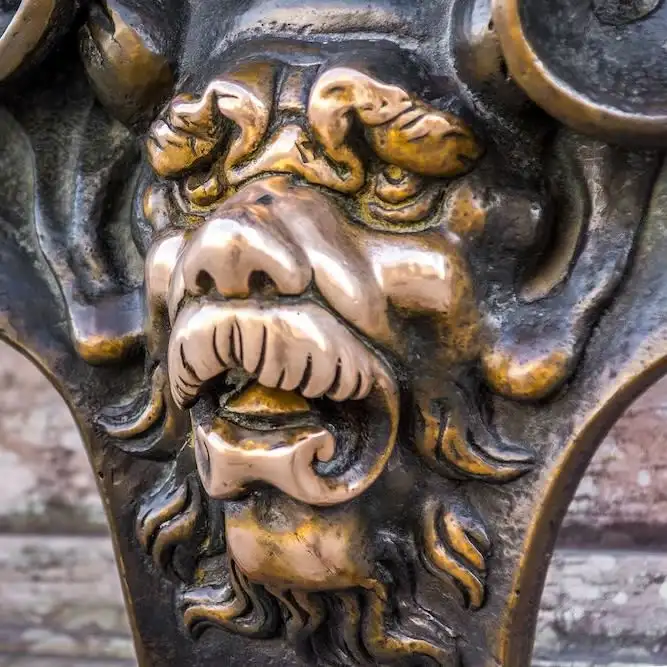
Day 1
Arrive Munich
Day 1
Arrive Munich



To Be Determined
Transfer from Airport
Munich has one main airport, Munich International Airport, where almost all visitors arrive. Taxis are available directly at the terminal exit, or you can arrange a private transfer for added convenience. The cheapest and fastest way to reach central Munich from is by train. The regional "S-bahn" trains delivers you from the airport train station (just follow the signs) directly to Munich's main station (München hbf) in the center of the city, from where you can easily hail a taxi that will be much less expensive than from the airport.

Day 1
Arrive Munich


Day 1
Arrive Munich




To Be Determined:
Transfer from Airport
Mid-Day/Afternoon:
Residence Palace
Afternoon/Late Afternoon:
Altstadt


Day 2
Munich
Day 2
Munich


9:30 AM - 12:00 PM
Guided Walk Tour of Historic Munich
Munich contains many reminders of a long and varied history but also encompasses the modern features of a strong and vibrant city. The insights of a local help make sense of the traditions, trends, and promises of Bavaria's Capital - sometimes referred to as the city of laptops and lederhosen. On this tour, your guide will show you the highlights of Munich and point out the many hidden treasures.

Day 2
Munich



Day 3
Munich
Day 3
Munich



Morning
Deutsches Museum
The Deutsches Museum (i.e., the German Museum) is the world's largest museum of science and technology. It is located on a small island in the River Isar, which flows through central Munich. The museum's vast and fascinating collection is spread out among 40 different exhibitions. You will encounter examples of technology stretching across humanity's long history, from a reproduction of pre-historic cave paintings to the laboratory where the atom was split.

Day 3
Munich



Day 4
Munich
Day 4
Munich

Early Morning to Afternoon
Excursion to Neuschwanstein Castle
An inspiration for the Disney Castles, numerous fairy tales, and countless dreamers, the Castle of Neuschwanstein is perhaps the most famous castle in the world. The eccentric Bavarian King Ludwig II created this amazing palace in the 19th century as an idyllic version of a medieval castle. You can visit by taking a guided tour from Munich or traveling independently by train and bus. In addition to enjoying spectacular views you can take a guided tour of the castle interior which is well worth the experience (but keep in mind that there a lots of steps to negotiate). If traveling independentally, be sure to book your interior tour reservations at least two days in advance.

Linderhof Palace
Stop by King Ludwig II's smallest palace on your way to Neuschwanstein and explore its delightful gardens.
Show More

Mary's Bridge
Enjoy a stunning view of the castle while suspended over a mountainous gorge.
Show More

Linderhof Palace
Stop by King Ludwig II's smallest palace on your way to Neuschwanstein and explore its delightful gardens.
Show More

Mary's Bridge
Enjoy a stunning view of the castle while suspended over a mountainous gorge.
Show More

Linderhof Palace
Stop by King Ludwig II's smallest palace on your way to Neuschwanstein and explore its delightful gardens.
Show More

Mary's Bridge
Enjoy a stunning view of the castle while suspended over a mountainous gorge.
Show More
prev
next

Day 4
Munich


Linderhof Palace
 Highlight of Excursion to Neuschwanstein Castle
Highlight of Excursion to Neuschwanstein CastleStop by King Ludwig II's smallest palace on your way to Neuschwanstein and explore its delightful gardens.
Another of the eccentric (some say mad) King Ludwig II's creations is Linderhof Palace, which with its fantastic grotto and Moorish pavilion testifies to the king's vision. The smallest of his three palaces that he built, it is the only one that he lived to see completed. The palace is in between Munich and Neuschwanstein, meaning many tours stop there along the way.
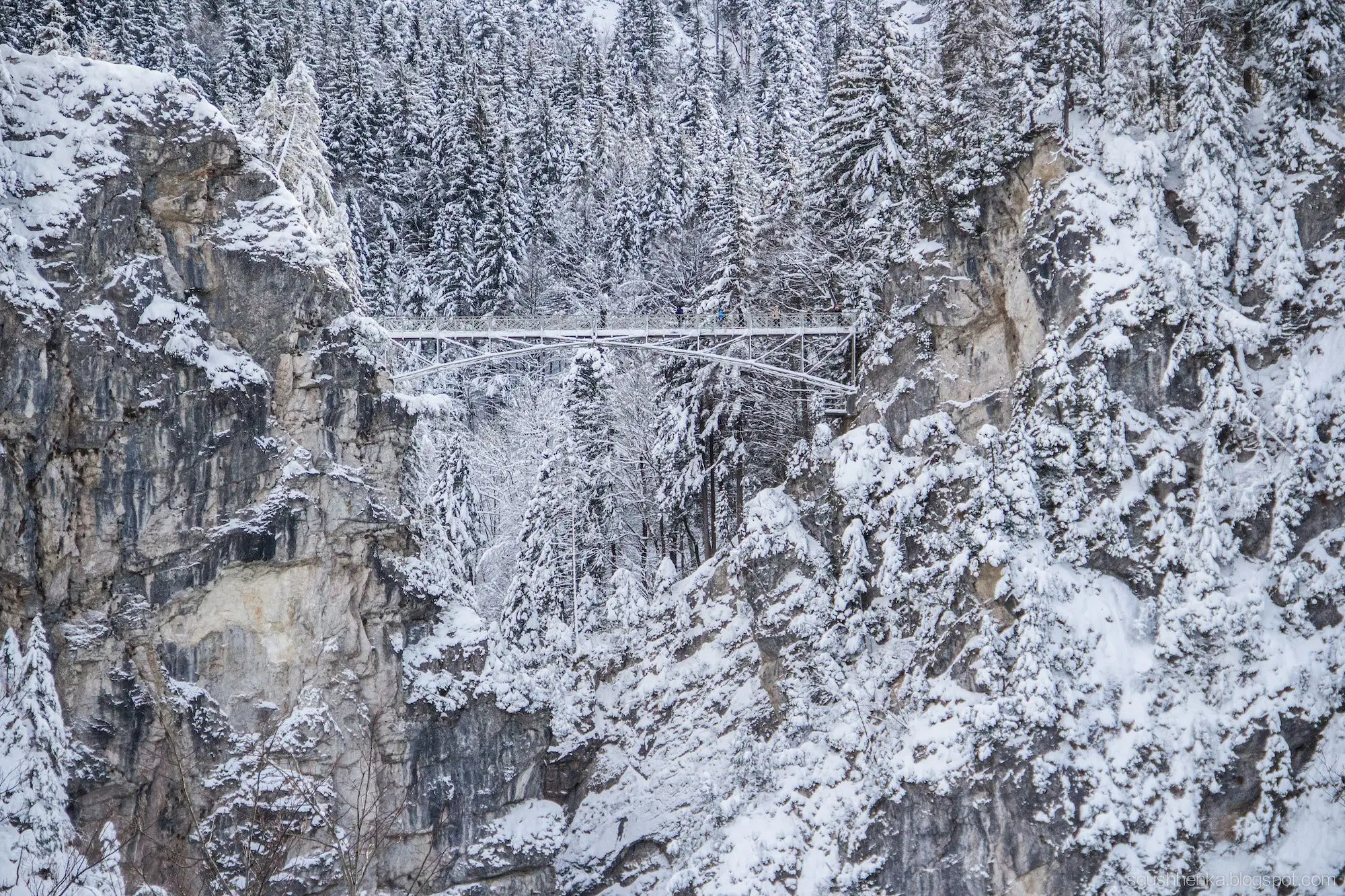
Mary's Bridge
 Highlight of Excursion to Neuschwanstein Castle
Highlight of Excursion to Neuschwanstein CastleEnjoy a stunning view of the castle while suspended over a mountainous gorge.
You definitely won't want to miss taking in the best views and photographs of Neuschwanstein from Marienbrücke (Mary's Bridge) over the dramatic Pöllat Gorge. The minibus terminal is very close at just 5 min walk away, while it's a steepish 10-15min climb on a wide and well-groomed path to get there from behind the castle. As noted above, Mary's Bridge can get a little crowded, so you might have to wait for a gap before you can fit on.

Linderhof Palace
 Highlight of Excursion to Neuschwanstein Castle
Highlight of Excursion to Neuschwanstein CastleStop by King Ludwig II's smallest palace on your way to Neuschwanstein and explore its delightful gardens.
Another of the eccentric (some say mad) King Ludwig II's creations is Linderhof Palace, which with its fantastic grotto and Moorish pavilion testifies to the king's vision. The smallest of his three palaces that he built, it is the only one that he lived to see completed. The palace is in between Munich and Neuschwanstein, meaning many tours stop there along the way.

Mary's Bridge
 Highlight of Excursion to Neuschwanstein Castle
Highlight of Excursion to Neuschwanstein CastleEnjoy a stunning view of the castle while suspended over a mountainous gorge.
You definitely won't want to miss taking in the best views and photographs of Neuschwanstein from Marienbrücke (Mary's Bridge) over the dramatic Pöllat Gorge. The minibus terminal is very close at just 5 min walk away, while it's a steepish 10-15min climb on a wide and well-groomed path to get there from behind the castle. As noted above, Mary's Bridge can get a little crowded, so you might have to wait for a gap before you can fit on.

Linderhof Palace
 Highlight of Excursion to Neuschwanstein Castle
Highlight of Excursion to Neuschwanstein CastleStop by King Ludwig II's smallest palace on your way to Neuschwanstein and explore its delightful gardens.
Another of the eccentric (some say mad) King Ludwig II's creations is Linderhof Palace, which with its fantastic grotto and Moorish pavilion testifies to the king's vision. The smallest of his three palaces that he built, it is the only one that he lived to see completed. The palace is in between Munich and Neuschwanstein, meaning many tours stop there along the way.

Mary's Bridge
 Highlight of Excursion to Neuschwanstein Castle
Highlight of Excursion to Neuschwanstein CastleEnjoy a stunning view of the castle while suspended over a mountainous gorge.
You definitely won't want to miss taking in the best views and photographs of Neuschwanstein from Marienbrücke (Mary's Bridge) over the dramatic Pöllat Gorge. The minibus terminal is very close at just 5 min walk away, while it's a steepish 10-15min climb on a wide and well-groomed path to get there from behind the castle. As noted above, Mary's Bridge can get a little crowded, so you might have to wait for a gap before you can fit on.
prev
next


Day 5
Munich
Day 5
Munich


Early Morning to Afternoon
Excursion to Lake Chiemsee
Also known as the 'Bavarian Sea', the majestic Lake Chiemsee is the largest lake in Bavaria with three beautiful islands which all benefit from regular ferry connections to the mainland. King Ludwig II built yet another grand palace, Herrenchiemsee Palace (also known as the Bavarian Versailles), on Herrenchiemsee island, while Fraueninsel island has an 8th-century Benedictine convent with some of the best Bavarian restaurants around and Krautinsel island is uninhabited.

Herrenchiemsee Palace
Explore King Ludwig II's own version of Versaille on the island of Herreninsel.
Show More

Frauneninsel
Journey by boat to a splendid little island within the lake where you'll find a 1200-year old convent.
Show More

Herrenchiemsee Palace
Explore King Ludwig II's own version of Versaille on the island of Herreninsel.
Show More

Frauneninsel
Journey by boat to a splendid little island within the lake where you'll find a 1200-year old convent.
Show More

Herrenchiemsee Palace
Explore King Ludwig II's own version of Versaille on the island of Herreninsel.
Show More

Frauneninsel
Journey by boat to a splendid little island within the lake where you'll find a 1200-year old convent.
Show More
prev
next

Day 5
Munich


Herrenchiemsee Palace
 Highlight of Excursion to Lake Chiemsee
Highlight of Excursion to Lake ChiemseeExplore King Ludwig II's own version of Versaille on the island of Herreninsel.
The Herrenchiemsee Palace is yet another of King Ludwig II's megalomaniacal building projects (such as Neuschwanstein Castle). This monument to regal absolutism, which is far more magnificently furnished than the palace of Versailles on which it was modeled, was begun in 1878. The State Bedroom is the most expensive single room built in the 19th century, helping to explain how Ludwig brought Bavaria to the brink of bankruptcy and why his ministers sought to have him declared unfit to rule. Inside the palace, there's a museum documenting Ludwig II's life.

Frauneninsel
 Highlight of Excursion to Lake Chiemsee
Highlight of Excursion to Lake ChiemseeJourney by boat to a splendid little island within the lake where you'll find a 1200-year old convent.
The 15.5-hectare (38-acre) Frauneninsel (the 'women's island' as opposed to Herreninsel, the 'men's island'), is home to 300 permanent residents and an active Benedictine convent called Frauenwörth, which was founded in the 800's AD. A number of pubs and cafés serve what are said to be among the best Bavarian dishes around, and the island's fishermen offer freshly smoked Chiemsee whitefish and other delicacies in their gardens.

Herrenchiemsee Palace
 Highlight of Excursion to Lake Chiemsee
Highlight of Excursion to Lake ChiemseeExplore King Ludwig II's own version of Versaille on the island of Herreninsel.
The Herrenchiemsee Palace is yet another of King Ludwig II's megalomaniacal building projects (such as Neuschwanstein Castle). This monument to regal absolutism, which is far more magnificently furnished than the palace of Versailles on which it was modeled, was begun in 1878. The State Bedroom is the most expensive single room built in the 19th century, helping to explain how Ludwig brought Bavaria to the brink of bankruptcy and why his ministers sought to have him declared unfit to rule. Inside the palace, there's a museum documenting Ludwig II's life.

Frauneninsel
 Highlight of Excursion to Lake Chiemsee
Highlight of Excursion to Lake ChiemseeJourney by boat to a splendid little island within the lake where you'll find a 1200-year old convent.
The 15.5-hectare (38-acre) Frauneninsel (the 'women's island' as opposed to Herreninsel, the 'men's island'), is home to 300 permanent residents and an active Benedictine convent called Frauenwörth, which was founded in the 800's AD. A number of pubs and cafés serve what are said to be among the best Bavarian dishes around, and the island's fishermen offer freshly smoked Chiemsee whitefish and other delicacies in their gardens.

Herrenchiemsee Palace
 Highlight of Excursion to Lake Chiemsee
Highlight of Excursion to Lake ChiemseeExplore King Ludwig II's own version of Versaille on the island of Herreninsel.
The Herrenchiemsee Palace is yet another of King Ludwig II's megalomaniacal building projects (such as Neuschwanstein Castle). This monument to regal absolutism, which is far more magnificently furnished than the palace of Versailles on which it was modeled, was begun in 1878. The State Bedroom is the most expensive single room built in the 19th century, helping to explain how Ludwig brought Bavaria to the brink of bankruptcy and why his ministers sought to have him declared unfit to rule. Inside the palace, there's a museum documenting Ludwig II's life.

Frauneninsel
 Highlight of Excursion to Lake Chiemsee
Highlight of Excursion to Lake ChiemseeJourney by boat to a splendid little island within the lake where you'll find a 1200-year old convent.
The 15.5-hectare (38-acre) Frauneninsel (the 'women's island' as opposed to Herreninsel, the 'men's island'), is home to 300 permanent residents and an active Benedictine convent called Frauenwörth, which was founded in the 800's AD. A number of pubs and cafés serve what are said to be among the best Bavarian dishes around, and the island's fishermen offer freshly smoked Chiemsee whitefish and other delicacies in their gardens.
prev
next

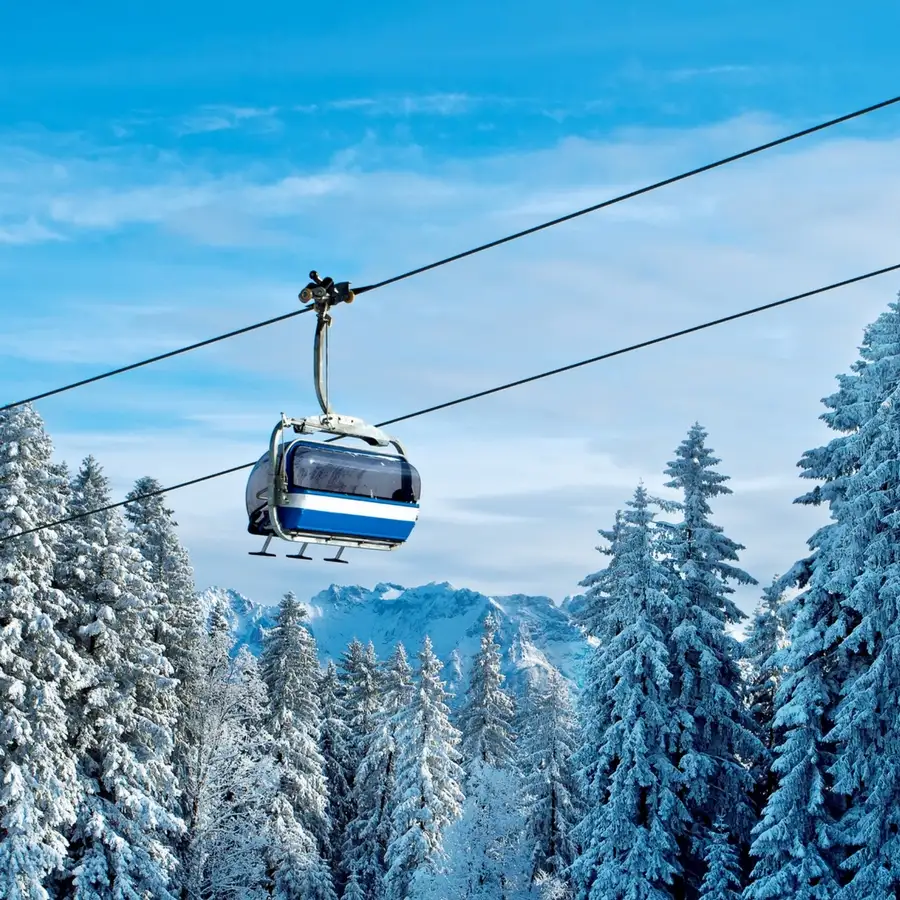
Day 6
Munich
Day 6
Munich

Early Morning to Evening
Excursion to Garmisch-Partenkirchen
Nestled in a magnificent setting at the foot of the Bavarian Alps, Garmisch-Partenkirchen is the German capital of summer hiking. The town has also been on the international winter-sports map ever since hosting the 1936 Winter Olympics. Once two different villages, Garmisch and Partenkirchen, the two halves of the town do show sharply contrasting characters: Garmisch is lively and international (in winter at least), while Partenkirchen better preserves its original Alpine charm. Perhaps the biggest draw for tourists is the opportunity to ride the famous Zugspitzbahn railway to Germany's tallest mountain, the Zugspitze.

Eibsee Lake
Hike to one of Bavaria's most picturesque spots.
Show More

Partnach Gorge
Venture deep within a stunning Alpine gorge.
Show More

Zugspitze
Take a ride on the famous Zugspitzbahn railway and a cable car to the peak of Germany's tallest mountain, the Zugspitze (2,962m or 9,718ft) for some truly breath-taking views.
Show More

Eibsee Lake
Hike to one of Bavaria's most picturesque spots.
Show More

Partnach Gorge
Venture deep within a stunning Alpine gorge.
Show More

Zugspitze
Take a ride on the famous Zugspitzbahn railway and a cable car to the peak of Germany's tallest mountain, the Zugspitze (2,962m or 9,718ft) for some truly breath-taking views.
Show More

Eibsee Lake
Hike to one of Bavaria's most picturesque spots.
Show More
prev
next

Day 6
Munich

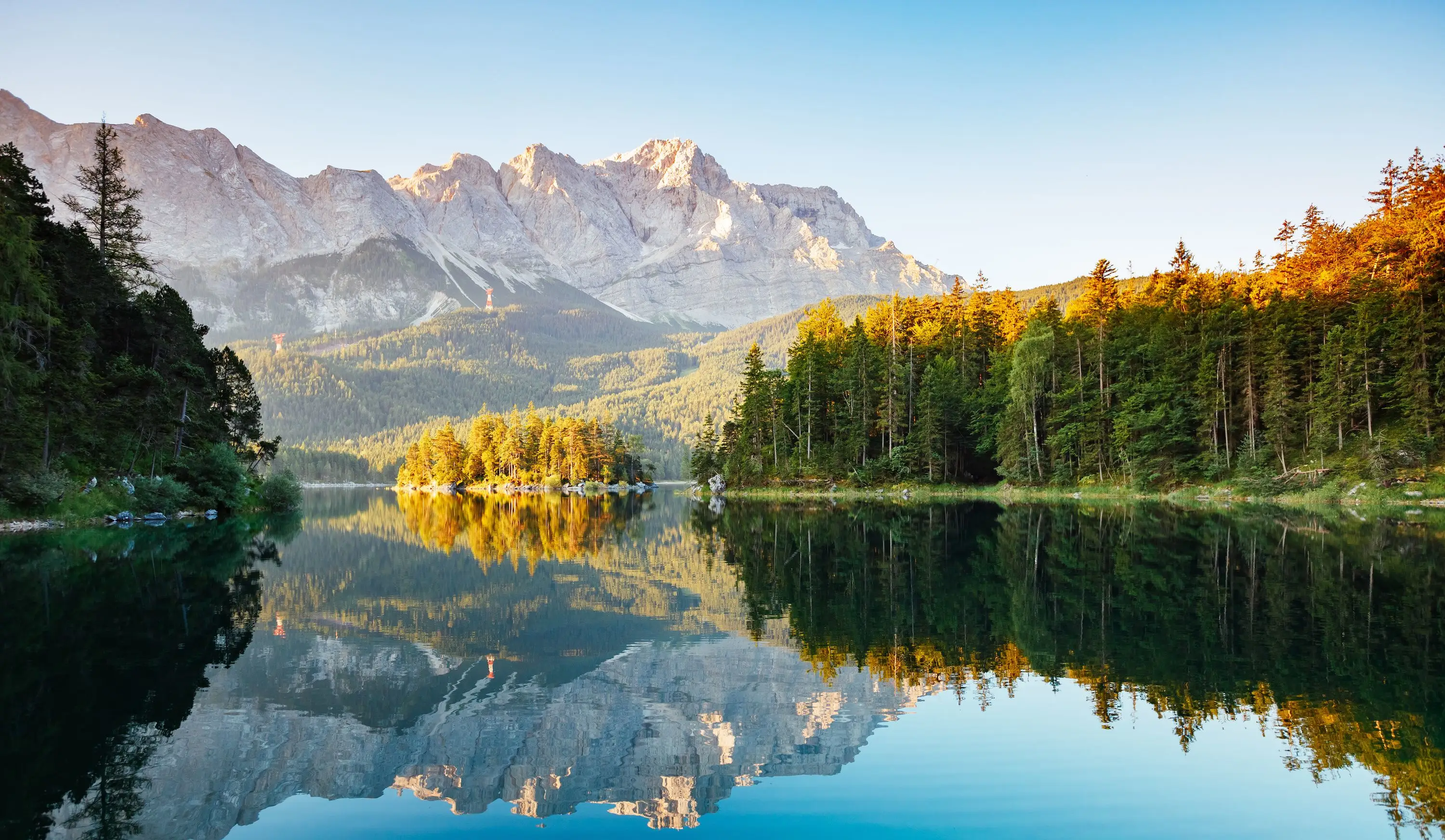
Eibsee Lake
 Highlight of Excursion to Garmisch-Partenkirchen
Highlight of Excursion to Garmisch-PartenkirchenHike to one of Bavaria's most picturesque spots.
If hiking is one of your goals in Garmisch and you're looking for a gentle option after descending from Zugspitze (or you don't wish to ascend the mountain at all), then we can heartily recommend the Eibsee Lake, which is, of course, one of the stops on the Zugspitzbahn. Just follow the signs to the lake (you can't miss it) and then the signs for the gentle 7.5km (4.6mi) hike around the lake shore while soaking up the stunning views. Avail yourself of the Eibsee beer garden after you get back to cool down.

Partnach Gorge
 Highlight of Excursion to Garmisch-Partenkirchen
Highlight of Excursion to Garmisch-PartenkirchenVenture deep within a stunning Alpine gorge.
If you want to avoid the expense of the Zugspitzbahn, then an excellent short or long hiking option is to head south of the train station to the Partnachklamm (Partnach Gorge). The trail to the gorge starts from the Olympic Ski Stadium, which if you need to save time you can get to by city bus no.1 or no.2 directly from the train station rather walking 2km (1.25mi) to Skistadion. From there you follow the signs to the gorge, which is only 30min away (you can also take a horse-drawn carriage from the stadium).
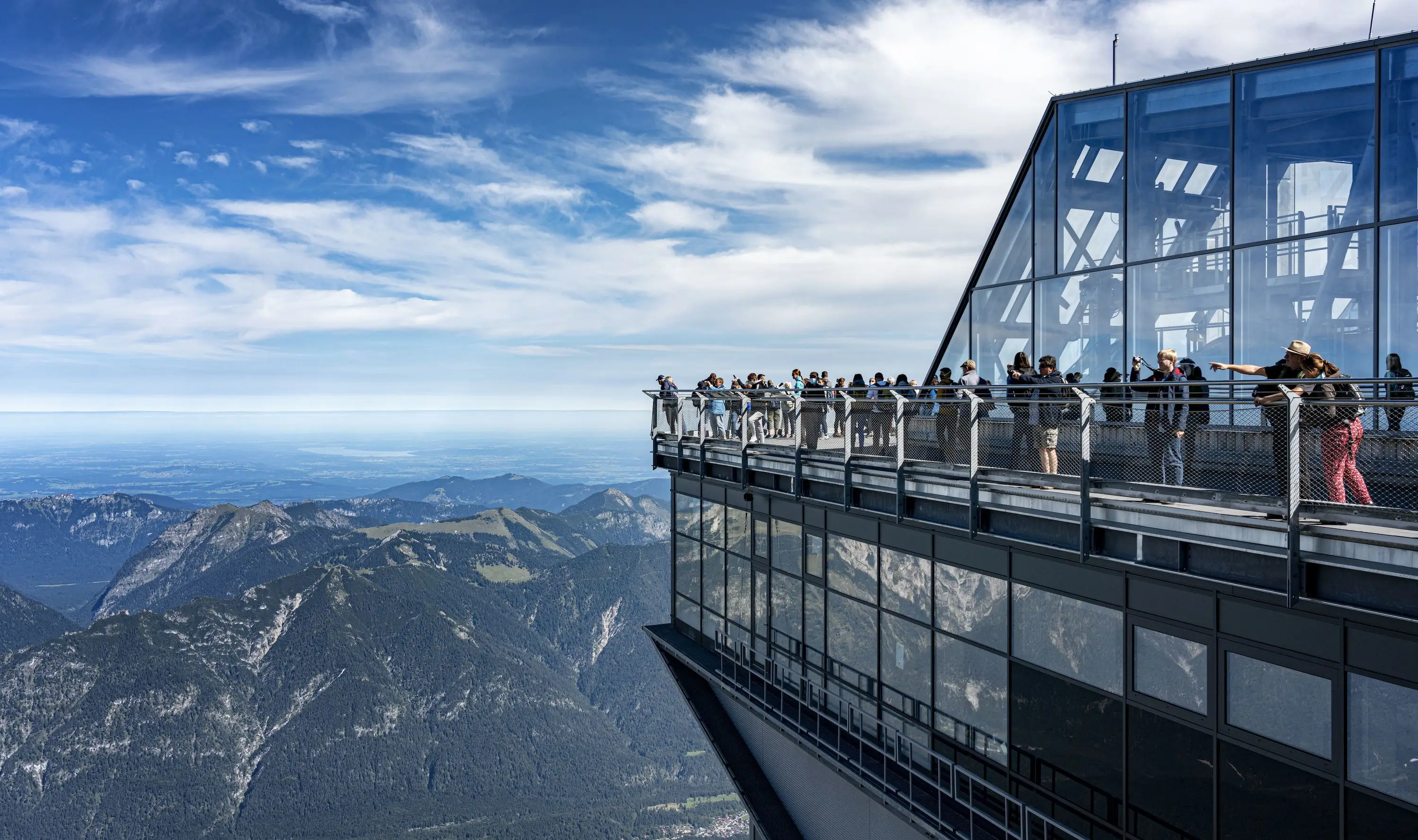
Zugspitze
 Highlight of Excursion to Garmisch-Partenkirchen
Highlight of Excursion to Garmisch-PartenkirchenTake a ride on the famous Zugspitzbahn railway and a cable car to the peak of Germany's tallest mountain, the Zugspitze (2,962m or 9,718ft) for some truly breath-taking views.
The Zugspitzbahn railway is the classic and breathtaking way of ascending Germany's highest peak, the Zugspitze (2962m or 9718ft). The line reaches as high as 2650m, making it the third-highest railway line in the world. The station and ticket office for the Zugspitzbahn trains (#3) is right beside the Garmisch-Partenkirchen train station. From here you take the purpose-built train along a cogwheel railway as far as Grainau - don't miss the wonderfully picturesque Pfarrkirche church that comes into view on the left as you near Grainau. In Grainau you'll change to a railcar that operates a rack-and-pinion system. The final 11.5km (7.1mi) gets steeper and steeper until you get just past the Eibsee station where you enter the 975m (3199ft) 'Rosi Tunnel'. You finally emerge at the Zugspitzplatt plateau on the Schneefen glacier below the Zugspitze peak. From there you journey to the summit on the ultramodern Gletscherbahn cable car (no extra ticket needed).

Eibsee Lake
 Highlight of Excursion to Garmisch-Partenkirchen
Highlight of Excursion to Garmisch-PartenkirchenHike to one of Bavaria's most picturesque spots.
If hiking is one of your goals in Garmisch and you're looking for a gentle option after descending from Zugspitze (or you don't wish to ascend the mountain at all), then we can heartily recommend the Eibsee Lake, which is, of course, one of the stops on the Zugspitzbahn. Just follow the signs to the lake (you can't miss it) and then the signs for the gentle 7.5km (4.6mi) hike around the lake shore while soaking up the stunning views. Avail yourself of the Eibsee beer garden after you get back to cool down.

Partnach Gorge
 Highlight of Excursion to Garmisch-Partenkirchen
Highlight of Excursion to Garmisch-PartenkirchenVenture deep within a stunning Alpine gorge.
If you want to avoid the expense of the Zugspitzbahn, then an excellent short or long hiking option is to head south of the train station to the Partnachklamm (Partnach Gorge). The trail to the gorge starts from the Olympic Ski Stadium, which if you need to save time you can get to by city bus no.1 or no.2 directly from the train station rather walking 2km (1.25mi) to Skistadion. From there you follow the signs to the gorge, which is only 30min away (you can also take a horse-drawn carriage from the stadium).

Zugspitze
 Highlight of Excursion to Garmisch-Partenkirchen
Highlight of Excursion to Garmisch-PartenkirchenTake a ride on the famous Zugspitzbahn railway and a cable car to the peak of Germany's tallest mountain, the Zugspitze (2,962m or 9,718ft) for some truly breath-taking views.
The Zugspitzbahn railway is the classic and breathtaking way of ascending Germany's highest peak, the Zugspitze (2962m or 9718ft). The line reaches as high as 2650m, making it the third-highest railway line in the world. The station and ticket office for the Zugspitzbahn trains (#3) is right beside the Garmisch-Partenkirchen train station. From here you take the purpose-built train along a cogwheel railway as far as Grainau - don't miss the wonderfully picturesque Pfarrkirche church that comes into view on the left as you near Grainau. In Grainau you'll change to a railcar that operates a rack-and-pinion system. The final 11.5km (7.1mi) gets steeper and steeper until you get just past the Eibsee station where you enter the 975m (3199ft) 'Rosi Tunnel'. You finally emerge at the Zugspitzplatt plateau on the Schneefen glacier below the Zugspitze peak. From there you journey to the summit on the ultramodern Gletscherbahn cable car (no extra ticket needed).

Eibsee Lake
 Highlight of Excursion to Garmisch-Partenkirchen
Highlight of Excursion to Garmisch-PartenkirchenHike to one of Bavaria's most picturesque spots.
If hiking is one of your goals in Garmisch and you're looking for a gentle option after descending from Zugspitze (or you don't wish to ascend the mountain at all), then we can heartily recommend the Eibsee Lake, which is, of course, one of the stops on the Zugspitzbahn. Just follow the signs to the lake (you can't miss it) and then the signs for the gentle 7.5km (4.6mi) hike around the lake shore while soaking up the stunning views. Avail yourself of the Eibsee beer garden after you get back to cool down.
prev
next


Day 7
Depart Munich
Day 7
Depart Munich

To Be Determined
Transfer to Airport
Munich has one main airport, Munich International Airport, where almost all visitors depart. The most affordable and often fastest way to reach the airport is by train. The "S-bahn" local trains takes 40 minutes and leaves directly from the main station in central Munich (München hbf). Other regional trains to the airport depart from other stations in Munich, so you may have an even better departure option near your hotel. Your hotel can arrange a reliable taxi or if you have the app, Uber is also a good option. You can also arrange a private transfer. If you are picked up about 3 hours before your departure time, you should arrive at the airport with a little over 2 hours to spare, depending on traffic. If you are leaving during rush hour, you may want to budget an extra fifteen to thirty minutes.

Day 7
Depart Munich


What's Included In Oktoberfest & Munich Adventure Trip

Pre-Paid Tours and Activities:
- Guided Walk Tour of Historic Munich
- Guided Beer Tasting Tour
- City Card for Munich, including discounts to many popular attractions

Go Real Travel Mobile App:
- Itinerary Plan & Reservations Info
- Points of Interest
- Detailed Travel Information
- Maps & Directions
Other Trips You May Like

10 Days
From$3250USD
Enchanting Christmas Market Trip to Bavaria & Prague with Gabriella-Maria

Germany, Czech Republic

10 Days
From$1899USD

7 Days
From$1498USD

10 Days
From$3095USD

4 Days
From$799USD

10 Days
From$1695USD
10 Day Munich and Prague Tour: Castles, Culture, and Beer Tasting Adventures

Germany, Czech Republic

8 Days
From$1499USD

7 Days
From$1375USD

7 Days
From$1635USD

10 Days
From$3250USD
Enchanting Christmas Market Trip to Bavaria & Prague with Gabriella-Maria

Germany, Czech Republic

10 Days
From$1899USD

7 Days
From$1498USD

10 Days
From$3095USD

4 Days
From$799USD

10 Days
From$1695USD
10 Day Munich and Prague Tour: Castles, Culture, and Beer Tasting Adventures

Germany, Czech Republic

8 Days
From$1499USD

7 Days
From$1375USD

7 Days
From$1635USD
prev
next
Featured Blogs
prev
next
Our Customers Say It Best
Marianne Strydom, Paarl, South Africa
I just wanted to thank you for organizing an amazing trip for me – I packed in so much in such a short period of time and everything was just perfect. The way you do things makes it possible to really get to know the destination, which for me as a travel agent could not have been better. 

Otto Chuy, Los Angeles, California
I am still surprised how everything worked as planned, without a hitch. All instructions in your itinerary were precise and correct. Your suggestions and comments in each of the locations we went to were very helpful. All your guides, without exception, were wonderful and exactly on time. 

Malini Dutta, Boston, Massachusetts
We can't thank you enough for the detailed plans, maps, and suggestions. It really felt that someone was holding our hands and showing us around. We had all the excitement of discovering foreign lands, with none of the problems that can happen while negotiating unfamiliar places. In fact, all the cities felt like home within a few hours of arriving and exploring. 

Bev and Mark Frankel, Williamsburg, Virginia
We could not be more pleased with Go Real Travel! You took the guess work out of things like public transport but still managed to allow us the freedom to tour as we wanted. Our guides were exceptional and every time I saw a Viking Cruise tour of 25 people, I realized the quality experience we were getting with Go Real. 

Marianne Strydom, Paarl, South Africa
I just wanted to thank you for organizing an amazing trip for me – I packed in so much in such a short period of time and everything was just perfect. The way you do things makes it possible to really get to know the destination, which for me as a travel agent could not have been better. 

Otto Chuy, Los Angeles, California
I am still surprised how everything worked as planned, without a hitch. All instructions in your itinerary were precise and correct. Your suggestions and comments in each of the locations we went to were very helpful. All your guides, without exception, were wonderful and exactly on time. 

Malini Dutta, Boston, Massachusetts
We can't thank you enough for the detailed plans, maps, and suggestions. It really felt that someone was holding our hands and showing us around. We had all the excitement of discovering foreign lands, with none of the problems that can happen while negotiating unfamiliar places. In fact, all the cities felt like home within a few hours of arriving and exploring. 

Bev and Mark Frankel, Williamsburg, Virginia
We could not be more pleased with Go Real Travel! You took the guess work out of things like public transport but still managed to allow us the freedom to tour as we wanted. Our guides were exceptional and every time I saw a Viking Cruise tour of 25 people, I realized the quality experience we were getting with Go Real. 



Explore cities in more detail

Nuremberg
One of the most authentic, storied German destinations, Nuremberg's picturesque old town, glorious castle, and buzzing Christmas Market makes this city a time-true classic. The ideal gateway to old Bavaria, Nuremberg offers a primer in German history before you embark on the lovely journey through old Bavaria, known as the Romantic Road. Considered the capital of the Holy Roman Empire in the middle ages, Nuremberg would have felt like the center of the world as a procession of kings and emperors passed through its magnificent gates. When the German Renaissance came, Nuremberg was at its heart. Albrecht Dürer, the great German master artist, was born here, and Martin Luther called Nuremberg Germany's 'eyes and ears'. Skip forward a few centuries, and the city took a dark turn, as Nuremberg became a gathering point for the German National Socialists. Slightly outside of town, you can still find the Nazi Party Rallying Grounds, a sobering reminder of the not so distant past. If it all gets too heavy, you can end the day with a glass of rotbier (red beer) and mull it over. Nuremberg is a must-see for anyone who wants to delve into Germany's past.

Learn About Nuremberg
Build Nuremberg Trip

Frankfurt
Dubbed ‘Mainhatten’ for its glass highrises, financial prowess, and proximity to the Main River, Frankfurt offers a fascinating glimpse into the ‘engine room’ of Europe’s economy with an unexpected twist. Among the glass and steel buildings, the old-worldly Römerberg square will give you a double-take. The square’s 15th-century half-timbered houses, old statues, and church spires contrast dramatically against the modern 21st-century skyscrapers beyond. If you visit at Christmas, the Römerberg is truly special, aglow with the light of the tallest Christmas tree in Germany. The square fills with stalls selling handicrafts, and the air is scented with hot apple wine, honey, and cinnamon. Delve deeper into Frankfurt and you’ll find a substantial museum district, the Museumsufer (Museum Embankment). This area features a cluster of twelve museums on either side of Main River. This includes the Städel, home to Tischbein’s famous painting of renowned writer Johann Wolfgang von Goethe, one of Frankfurt’s most prestigious sons. The more time you spend in Frankfurt, the more you’ll discover a highly cultured city lurking beneath its glass facades. If you have the time, Frankfurt is certainly worth a second look.

Learn About Frankfurt
Build Frankfurt Trip

Heidelberg
Heidelberg is buried deep in the forests of southwest Germany. Flanking both sides of the Neckar River, Heidelberg's red and white baroque old town looks like something from a book of folktales. On the hillside above the town, you'll see the looming, tumbledown remains of Heidelberg's Gothic-Renaissance castle, Heidelberger Schloss. The subject of strange local legends, Heidelberg Castle was once home to knights, a famous court jester, and even a witch. It is said the first person who pulls out an iron ring embedded in one of the great doors will be the castle's true owner. Surely on your visit, it's worth a try? Across the river, follow in the footsteps of scholars on a hiking trail known as The Philosophers’ Way. Heidelberg University is the oldest in Germany, and its leafy, temple-like campus contributes to the gentle, contemplative atmosphere of the town. A poetic city with the dreamy feel of a watercolor painting, it's no wonder Heidelberg inspired writers like Mark Twain and Johann Wolfgang von Goethe. The city has even been recognized by UNESCO as a City of Literature. Especially on misty, grey days, Heidelberg has a way of sweeping you up in its romanticism.

Learn About Heidelberg
Build Heidelberg Trip
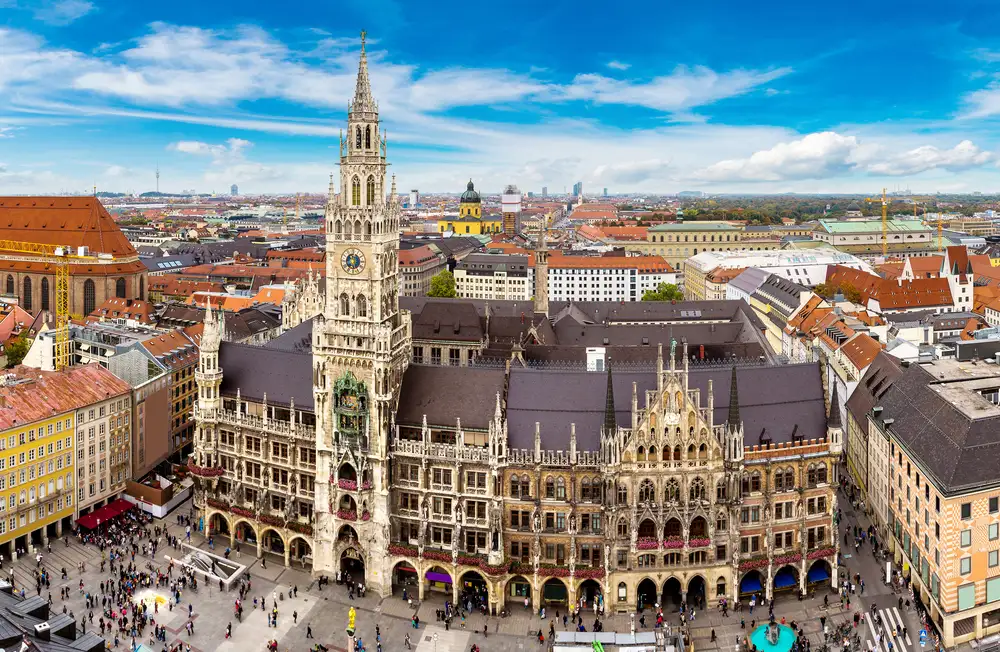
Munich
Arriving in Munich, you would be forgiven for thinking you were on the set of a movie about old Bavaria. At the Old Town beer halls, barmaids laced in dirndl dresses serve up frosty Helles lager, as oom-pah music drifts across the Marienplatz square. Men in lederhosen and checked shirts merrily give toasts as they knock glasses, or steins, as they’re known here. They sit at tables laden with wurst sausage and giant pretzels oozing with herby butter. This is Germany’s Germany, a place where folk traditions never stopped, and the revelry doesn’t either. Even when it isn’t Oktoberfest, the town’s notorious beer-drinking celebration, Munich is always happy to show you a good time. Simply cast your eyes around the lavish, gilded banquet hall at the Munich Residenz, the 13th-century Wittelsbach palace. You’ll see Munich has been impressing guests for centuries. Or, swing by the BMW Museum and check out the classic German cars. They even let you sit inside to test out the new models. At the city’s English Gardens, surfers ride waves on one of the park’s rivers. Munich is filled to the brim with this kind of pure-hearted German fun.

Learn About Munich
Build Munich Trip

Salzburg
You've probably heard this before— the city of Salzburg is straight out of a fairytale. Nestled in the mountains, this romantic city's Baroque architecture with colorful domes and spires is especially striking against the ancient fortress and Austrian Alpine backdrop. If you're looking for an amazing view, climb up to Hohensalzburg Fortress, Central Europe's largest intact fortress, for a jaw-dropping panorama of the city backed by misty mountains. Perhaps most famous for being the birthplace of the renowned composer Wolfgang Amadeus Mozart and the filming location for the classic The Sound of Music, this city has much to offer. Salzburg has become an important artistic and cultural center, featuring magnificent concert halls that uphold the city's tradition of classical music every day of the year, as well as acclaimed art exhibitions and museums. If you do it right, your visit to Salzburg will immerse you in the city's unforgettable atmosphere and keep you coming back for more.

Learn About Salzburg
Build Salzburg Trip
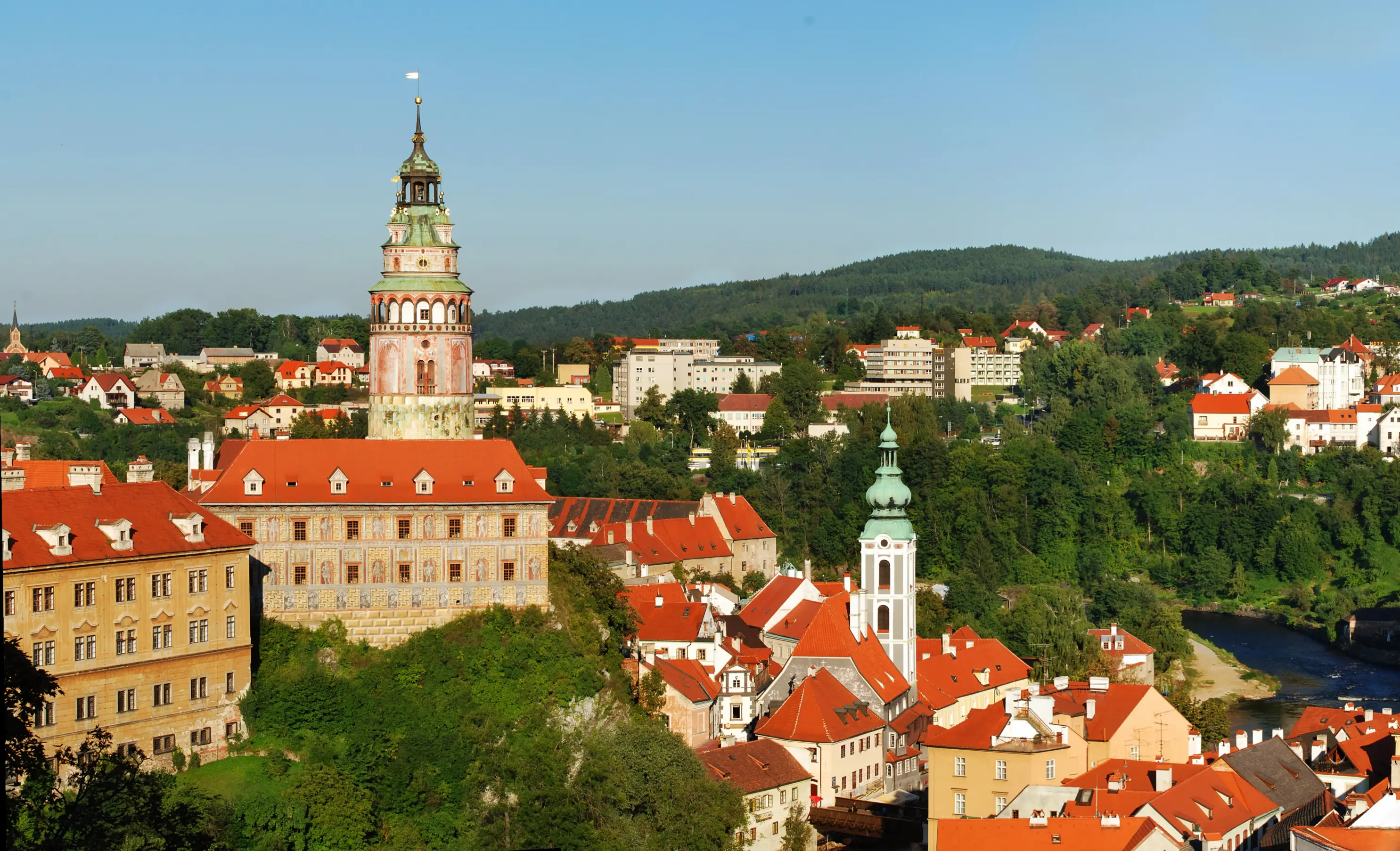
Cesky Krumlov
Cesky Krumlov is a charming little town in South Bohemia. It might be small, but it’s full of whimsical character and mystery. Walking through the narrow streets and across the bridge, the views of the medieval Cesky Krumlov Castle will take your breath away. At night, street musicians serenade visitors on the bridge where you can dance beneath the stars and the watchful eye of the magnificent tower. Dozens of unique local artisan shops, cafes, and restaurants are woven among the winding streets. In the summer, the city is lush with life and greenery. Rafters race down the river, stopping in the center along the way to enjoy a hearty meal before continuing their journey. In the winter, the main square transforms into a magnificent Christmas market and light blankets of snow cover the rooftops. This quaint little town will exceed your expectations and you may never want to leave.

Learn About Cesky Krumlov
Build Cesky Krumlov Trip

Nuremberg
One of the most authentic, storied German destinations, Nuremberg's picturesque old town, glorious castle, and buzzing Christmas Market makes this city a time-true classic. The ideal gateway to old Bavaria, Nuremberg offers a primer in German history before you embark on the lovely journey through old Bavaria, known as the Romantic Road. Considered the capital of the Holy Roman Empire in the middle ages, Nuremberg would have felt like the center of the world as a procession of kings and emperors passed through its magnificent gates. When the German Renaissance came, Nuremberg was at its heart. Albrecht Dürer, the great German master artist, was born here, and Martin Luther called Nuremberg Germany's 'eyes and ears'. Skip forward a few centuries, and the city took a dark turn, as Nuremberg became a gathering point for the German National Socialists. Slightly outside of town, you can still find the Nazi Party Rallying Grounds, a sobering reminder of the not so distant past. If it all gets too heavy, you can end the day with a glass of rotbier (red beer) and mull it over. Nuremberg is a must-see for anyone who wants to delve into Germany's past.

Learn About Nuremberg
Build Nuremberg Trip

Frankfurt
Dubbed ‘Mainhatten’ for its glass highrises, financial prowess, and proximity to the Main River, Frankfurt offers a fascinating glimpse into the ‘engine room’ of Europe’s economy with an unexpected twist. Among the glass and steel buildings, the old-worldly Römerberg square will give you a double-take. The square’s 15th-century half-timbered houses, old statues, and church spires contrast dramatically against the modern 21st-century skyscrapers beyond. If you visit at Christmas, the Römerberg is truly special, aglow with the light of the tallest Christmas tree in Germany. The square fills with stalls selling handicrafts, and the air is scented with hot apple wine, honey, and cinnamon. Delve deeper into Frankfurt and you’ll find a substantial museum district, the Museumsufer (Museum Embankment). This area features a cluster of twelve museums on either side of Main River. This includes the Städel, home to Tischbein’s famous painting of renowned writer Johann Wolfgang von Goethe, one of Frankfurt’s most prestigious sons. The more time you spend in Frankfurt, the more you’ll discover a highly cultured city lurking beneath its glass facades. If you have the time, Frankfurt is certainly worth a second look.

Learn About Frankfurt
Build Frankfurt Trip

Heidelberg
Heidelberg is buried deep in the forests of southwest Germany. Flanking both sides of the Neckar River, Heidelberg's red and white baroque old town looks like something from a book of folktales. On the hillside above the town, you'll see the looming, tumbledown remains of Heidelberg's Gothic-Renaissance castle, Heidelberger Schloss. The subject of strange local legends, Heidelberg Castle was once home to knights, a famous court jester, and even a witch. It is said the first person who pulls out an iron ring embedded in one of the great doors will be the castle's true owner. Surely on your visit, it's worth a try? Across the river, follow in the footsteps of scholars on a hiking trail known as The Philosophers’ Way. Heidelberg University is the oldest in Germany, and its leafy, temple-like campus contributes to the gentle, contemplative atmosphere of the town. A poetic city with the dreamy feel of a watercolor painting, it's no wonder Heidelberg inspired writers like Mark Twain and Johann Wolfgang von Goethe. The city has even been recognized by UNESCO as a City of Literature. Especially on misty, grey days, Heidelberg has a way of sweeping you up in its romanticism.

Learn About Heidelberg
Build Heidelberg Trip

Munich
Arriving in Munich, you would be forgiven for thinking you were on the set of a movie about old Bavaria. At the Old Town beer halls, barmaids laced in dirndl dresses serve up frosty Helles lager, as oom-pah music drifts across the Marienplatz square. Men in lederhosen and checked shirts merrily give toasts as they knock glasses, or steins, as they’re known here. They sit at tables laden with wurst sausage and giant pretzels oozing with herby butter. This is Germany’s Germany, a place where folk traditions never stopped, and the revelry doesn’t either. Even when it isn’t Oktoberfest, the town’s notorious beer-drinking celebration, Munich is always happy to show you a good time. Simply cast your eyes around the lavish, gilded banquet hall at the Munich Residenz, the 13th-century Wittelsbach palace. You’ll see Munich has been impressing guests for centuries. Or, swing by the BMW Museum and check out the classic German cars. They even let you sit inside to test out the new models. At the city’s English Gardens, surfers ride waves on one of the park’s rivers. Munich is filled to the brim with this kind of pure-hearted German fun.

Learn About Munich
Build Munich Trip

Salzburg
You've probably heard this before— the city of Salzburg is straight out of a fairytale. Nestled in the mountains, this romantic city's Baroque architecture with colorful domes and spires is especially striking against the ancient fortress and Austrian Alpine backdrop. If you're looking for an amazing view, climb up to Hohensalzburg Fortress, Central Europe's largest intact fortress, for a jaw-dropping panorama of the city backed by misty mountains. Perhaps most famous for being the birthplace of the renowned composer Wolfgang Amadeus Mozart and the filming location for the classic The Sound of Music, this city has much to offer. Salzburg has become an important artistic and cultural center, featuring magnificent concert halls that uphold the city's tradition of classical music every day of the year, as well as acclaimed art exhibitions and museums. If you do it right, your visit to Salzburg will immerse you in the city's unforgettable atmosphere and keep you coming back for more.

Learn About Salzburg
Build Salzburg Trip

Cesky Krumlov
Cesky Krumlov is a charming little town in South Bohemia. It might be small, but it’s full of whimsical character and mystery. Walking through the narrow streets and across the bridge, the views of the medieval Cesky Krumlov Castle will take your breath away. At night, street musicians serenade visitors on the bridge where you can dance beneath the stars and the watchful eye of the magnificent tower. Dozens of unique local artisan shops, cafes, and restaurants are woven among the winding streets. In the summer, the city is lush with life and greenery. Rafters race down the river, stopping in the center along the way to enjoy a hearty meal before continuing their journey. In the winter, the main square transforms into a magnificent Christmas market and light blankets of snow cover the rooftops. This quaint little town will exceed your expectations and you may never want to leave.

Learn About Cesky Krumlov
Build Cesky Krumlov Trip
prev
next


 Map of Your Itinerary Route
Map of Your Itinerary Route
Zoom In to the cities to see your itinerary in more detail


 4.8
4.8 








